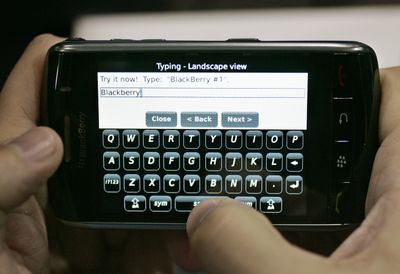GADGETS

To its fiercest devotees, one of the best things about the BlackBerry is its carefully designed physical keyboard, which the skilled BlackBerry addict can play like a violin.
These folks scorn Apple’s popular iPhone, whose keyboard is virtual and must be operated by tapping on the screen.
But last week, Verizon Wireless and Research in Motion, the BlackBerry’s maker, introduced a BlackBerry model without a physical keyboard – one where typing and navigating require tapping on glass, just as users do on the iPhone.
The BlackBerry Storm sells for $250 with a two-year contract, though a $50 mail-in rebate can bring the price down close to the $199 that Apple charges for the base model of the iPhone.
Despite its lack of a keyboard, the Storm is a real BlackBerry in every other respect, with push e-mail, corporate features and the familiar BlackBerry menus.
In many respects, the Storm is a touch-based, large-screen version of the recently released BlackBerry Bold, which is the most polished version of a traditional BlackBerry.
It is also the latest member of the new class of handheld computers, the super-smart phone category kicked off by the iPhone last year and joined by the Google G1 earlier this year.
The Storm sports a large, high-resolution touch screen that fills most of its surface and automatically switches from portrait to landscape mode when the phone is turned.
There’s also a forthcoming souped-up download store for third-party software, meant to be similar to the ones on the iPhone and the Google phone.
And the Storm can even be used in European and other countries where most Verizon phones don’t work.
However, the biggest innovation in the Storm is a clever feature RIM hopes will give it a big advantage over the iPhone. When you strike a key or icon on the Storm’s screen, you feel a physical sensation, as if you were pressing down on a real key or button.
That’s because you are, in fact, pressing a real button. The entire glass display is one large button, mounted on a mechanical substructure that allows it to be depressed when pressure is applied.
The Wall Street Journal